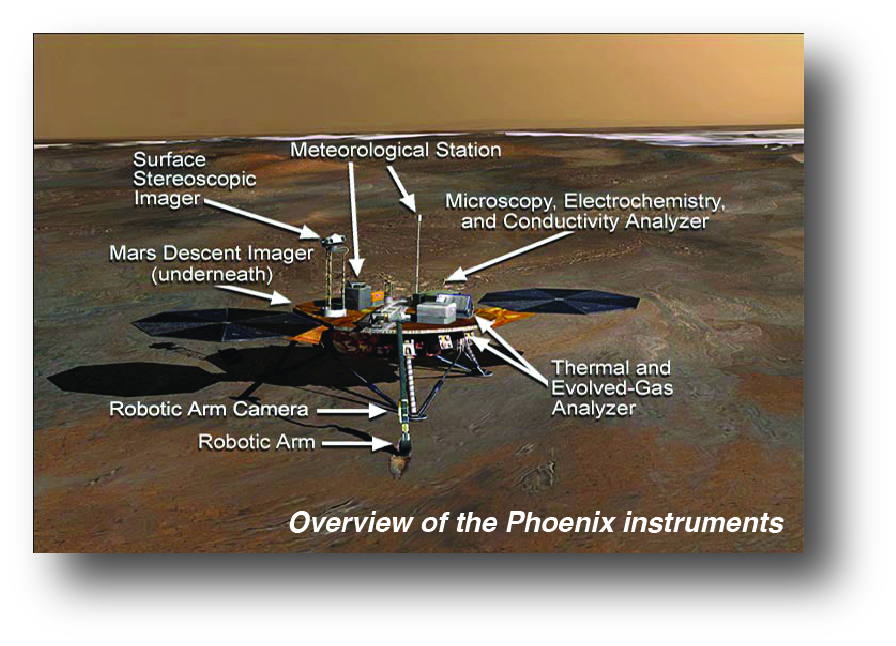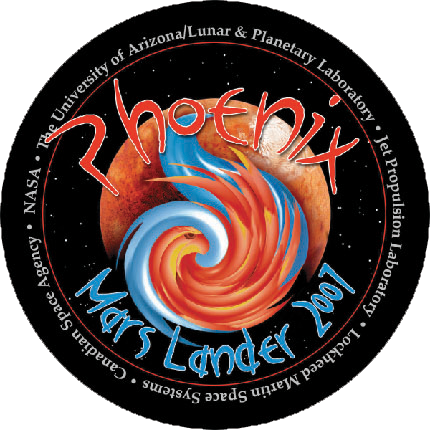
Phoenix Mars Lander (PHX)
landed at 68.22oN latitude and 125.7oW longitude on May 25, 2008. It was equipped with a suite of instruments that included a meteorological package as well as a robotic arm to dig through the protective topsoil layer to study the soil and water-ice below.
Basic Mission Goals
Study the history of water in all its phases on Mars and how that pertains to the climatological, geological, and potentially biological record
Search for evidence of a habitable zone and assess the biological potential of the ice-soil boundary in the present martian climate.
For more information on the PHX mission see the following links:
Do you need to update your browser to view XML?
Instrumentation and Access to Data:
The Atmospheric instrument complement consists of:
- A meteorological station consisted of a pressure sensor and a mast that held 3 thermocouples and a wind speed indicator (Telltale)
- A LIDAR designed to measure the vertical distribution of scattering particles (both dust and clouds) in the Martian atmosphere
- Atmospheric structure data were derived from output from the Inertial Measurement Unit during entry, descent and landing
- Atmospheric opacities were derived from data from the Surface Stereo Imager
Archive bundles
Phoenix Mission Bundle contains documents and files common to all the instruments describing the mission and spacecraft (In preparation).
Each of the following archive bundles contains data collections for system context, documentation for the data, individual data collections for raw, reduced, and/or derived data products complete with calibration information where applicable. Other products are available from the Geosciences Node.
Meteorological Station (MET) data are stored as time ordered ASCII tables with supporting documentation for sols 1-150.
Light Detection and Ranging (LIDAR) data are stored as time ordered ASCII tables with supporting documentation for sols 1-150.
Atmospheric Structure Experiment (ASE) data are stored as time ordered ASCII tables with supporting documentation for Entry, Descent, and Landing.
Atmospheric Opacity (AO) data are stored as time-ordered ASCII tables with supporting documentation for sols 1-151, derived from images from the SSI.
Telltale Anemometer (TT) data are stored as time-ordered ASCII tables with supporting documentation for sols 1-151, derived from images from the SSI.
 PDS: The Planetary Atmospheres Node
PDS: The Planetary Atmospheres Node


